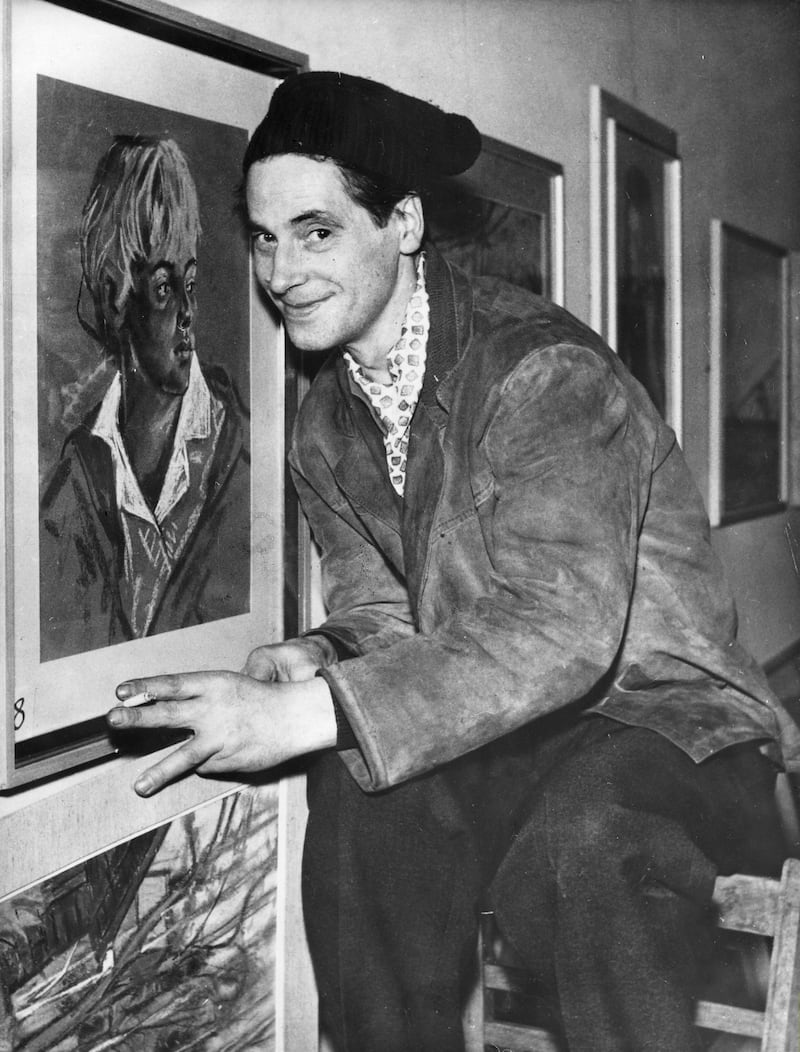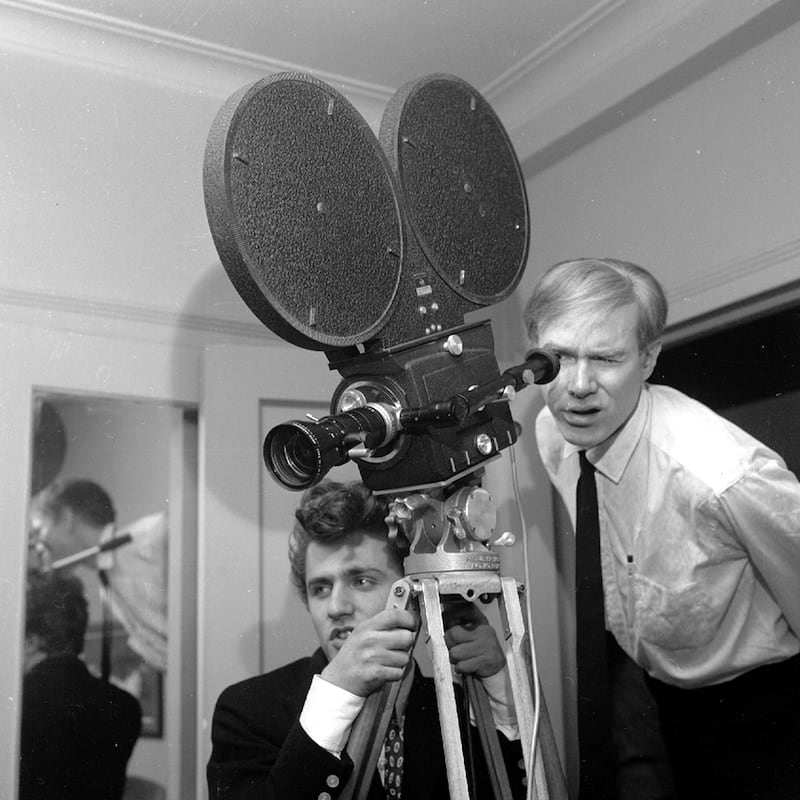In the art world, authenticity can make or break careers and livelihoods. Just ask Peter Silverman. In January 2007 the Canadian-born collector was browsing in a New York art dealership when a drawing on vellum took his eye, a head-and-shoulders study of an aristocratic young woman, dressed in an Italian Renaissance style. The dealer had paid just under $22,000 for it.
Made using pen, ink, chalk and watercolour, it depicts her in profile, her lips slightly pursed, as though wishing she were not being observed. The artist was unknown, but Silverman immediately felt a flash of recognition: perhaps, just perhaps, it was by a Florentine Renaissance artist. And perhaps, just perhaps, it was by the greatest of them all: Leonardo da Vinci.
Without the artist around to authenticate the work, the next best thing is an expert. Silverman found several who agreed with his theory, including Martin Kemp, a Leonardo expert and now retired professor of art history at Oxford University. Prof Kemp believed the girl was Bianca Sforza, the illegitimate teenage daughter of the duke of Milan, and named the drawing La Bella Principessa (an interesting embellishment, as there was nothing recorded to suggest Bianca was a princess).
Silverman’s theory began to gather pace, growing stronger with every new detail: the vellum was carbon-dated to around 1440-1650; an art examiner claimed to find a fingerprint (ta-da!) matching one on Leonardo’s unfinished painting St Jerome in the Wilderness. Despite other experts publicly declaring it a screaming fake, reports began to circulate that estimated Silverman’s acquisition to be worth an eye-watering $150 million.
Cameron Diaz: ‘I left movies because I wanted to live my life differently. We started our family, and that was all I wanted to do’
Aoibhinn Ní Shúilleabháin: ‘I mourned friendships for too long that were actually past their time’
Hera restaurant review: A new gastropub on Dublin’s north side, without the usual cliches
The fate of the young woman she calls “the doubtful princess” is one of many fascinating stories Alice Sherwood tells in Authenticity: Reclaiming Reality in a Counterfeit Culture. It is that rarest of book breeds: nonfiction that reads as fluidly and persuasively as a novel.
In the run-up to her appearance at Dalkey Book Festival this weekend, Sherwood and I are talking about fakes and experts, and the uncomfortable relationship that binds the two. In the book, she writes: “Why are we so obsessed with the ‘artist’s hand’ authenticity? Is it because in our hearts we believe that a work of art is made in an almost divinely inspired moment of creation, that it loses its uniqueness, its ‘aura’, by being reproduced?”
Art historians must make many decisions about what is real and what is not. Across all artforms, Sherwood believes, experts can be in a strangely vulnerable position when it comes to fakes. Con artists target two types of victims, she says: those who have been conned before, because they want to turn a previous loss into a win; and people who think they are clever. “And what does a Leonardo expert want?” Sherwood says. “They want to be the first one to authenticate the newest Leonardo.”

Fraudsters know how to tune into people’s fundamental desires. “And they’re pretty simple, most of them; they tend to be money, love, success, approbation,” Sherwood says. The power of the great confidence trickster comes from the psychological skill with which they home in on what their victim craves. “From then on the con artists themselves are superrational, because they’re in it for the money. But the mark, the victim, is in an emotional register, and prey to all the quirks, wobbles, weaknesses and the self-induced blindness of that emotional state. Sometimes they seem to want to believe they’ve found love, that they can make a million, get something for nothing.”
The book was inspired by a former boss and friend, a “fantasist and fabulist” she calls Alastair. Among other whoppers, he let it be known that he was from an aristocratic background, that he had a serious long-term illness, that he was working for the security services (hush-hush professions are always a red flag) and that his father had been killed in a drive-by shooting. Alastair became engaged to two of Sherwood’s friends simultaneously. When he disappeared, one of his former fiancees spent months tracking him down, unpicking his many lies.
Looking back at her connection with Alastair over decades, Sherwood now sees how closely his scamming followed what she calls “the anatomy of the con and the playbook”. Discovering Alastair’s deceptions led to Sherwood’s reading up on every sort of fraud. “I went through impostors. I went through con men. Then I started on art forgers, money forgers, and got on to brand forgeries and counterfeits,” she says.
Although the thorny issue of authenticity is generating plenty of headlines with the rise of artificial intelligence and ChatGPT, it has been around forever, Sherwood notes, referring to the evidence of counterfeit wine found at Pompeii. Some scams are eternal, and social media has made them quicker and more colourful, giving them greater reach and immediacy. “Being a good con artist really was a top-notch profession, but now anyone can do it. Anyone can go online and be an Alastair, a romance scammer – and not with two fiancees: you can have 20 … The technology has totally amplified fakery and made it easier to be a faker.”

Sherwood’s subjects include Stanley Clifford Weyman, a serial impostor; a German forger named Lothar Malskat, who was so good at the French impressionists that a painting could take him less than an hour; and Andy Warhol and his long-time collaborator and assistant Gerard Malanga, whom she says made many of Warhol’s paintings – in this case not fakes or forgeries but works created with a different notion of authenticity in mind. Sherwood cites Warhol’s Factory studio as crucial in the shift from “artist’s hand to artist’s brand”.
The key difference, Sherwood explains, is the move to an industrial society. “With Rubens, for example, everything has to be a brush stroke even if it isn’t necessarily your brush stroke. Warhol’s pictures were screen-prints – a mechanical process rather than a creative process. Warhol realised that something could be a genuine Warhol even if he’d never touched it, as long as he authorised it.”
The marketplace for fraudster stories is a crowded one, yet Sherwood’s combination of insight and zippy storytelling makes Authenticity a witty, clever and entertaining read. Whether exploring cultural frauds, nature’s most outrageous deceivers, the global trade in counterfeit fashion, big-game hunting, open-source intelligence projects, art-world NFTs, virtual reality or politics, her research yielded a trove of new cons. She didn’t want to use the same old stories, deliberately omitting anything that was “too familiar, too topical, too Netflix”.
Sherwood also excluded what she terms “fake fraudsters” – anyone who invented or amplified their cons, such as Frank Abagnale, the subject of Steven Spielberg’s 2002 film Catch Me if You Can. Abagnale’s claims to have successfully masqueraded as a Pan Am pilot, doctor, sociology professor and lawyer turned out to be at best misleading brags and at worst complete fictions.

Sherwood also examines a second, more recent interpretation of authenticity, “one that is more subjective and fluid than the fact-based variety – a personal authenticity”. She writes that “the promise of our age is authenticity as self-fulfilment”. These two meanings could hardly be more different: one is based on facts, the other aspirational and self-actualising. The issue around the portrait La Bella Principessa is one of traditional authenticity, a matter of science, information and verification.
Sherwood believes that, even though counterfeit culture is shaped by the most powerful forces of evolution, economics and technology, we can still reclaim reality. In the final section of her book she addresses digital technology. It’s too easy to paint a bleak picture of cyberspace, Sherwood believes, because technologies as disruptive as these “take generations to work through”. The origin story of the internet is one of freedom, a democratic sharing of information. “The seismic change has been the speed and reach of the network effect that the internet affords. Every tweet is potentially a tech-enabled information virus.”
As she finished writing Authenticity, Sherwood realised she was cautiously optimistic about the future. And certainly the examples she cites are cheering, such as Eliot Higgins and his army of super-sleuths at Bellingcat, the Dutch investigative-journalism collective, using publicly available material to solve the mystery of the crash of Malaysia Airlines flight 17, in 2014; the fashion watchdog Diet Prada; and Scamalytics, which has 10 million images of dating-site scammers. “The scammers always get in there first, and then we work out how to fight them,” Sherwood says. “There is a fight back happening at all levels.”
Martin Kemp has stood by his authentication of the Italian princess as being by Leonardo. Others are equally certain that it is not. In his 2015 memoir A Forger’s Tale, the prolific art fraudster Seán Greenhalgh claimed he drew the portrait decades earlier, using vellum from a 16th-century land deed. The subject, Greenhalgh said, was a girl he worked with at a Bolton supermarket in 1978. (A previous owner of the drawing said this was impossible, as the drawing was in her family’s collection before Greenhalgh was born.)
Is the portrait worth $22,000 or $150 million? The only way to determine the value would be to put the drawing up for sale, but it has never appeared on the market. “The poor Principessa,” Sherwood concludes, “is believed to languish unseen in a Geneva Freeport warehouse.”
Alice Sherwood appears at two Dalkey Book Festival events on Saturday, June 17th: The Fight against Fakery; and Friends with Benefits: Ireland and Britain. Her book, Authenticity: Reclaiming Reality in a Counterfeit Culture, is published by Mudlark







